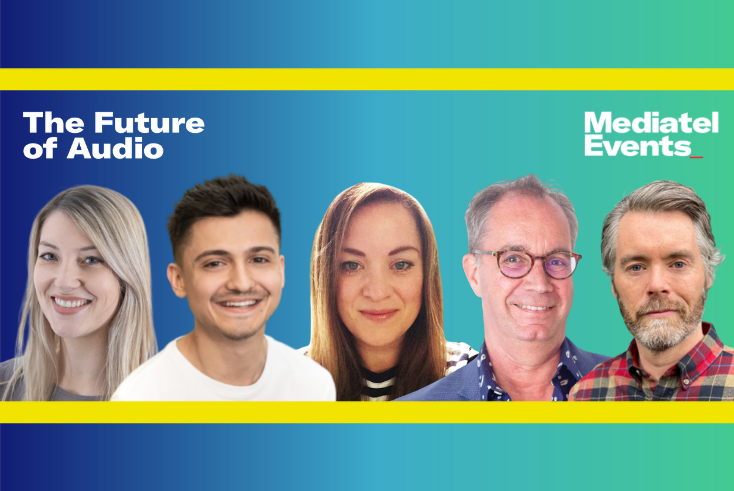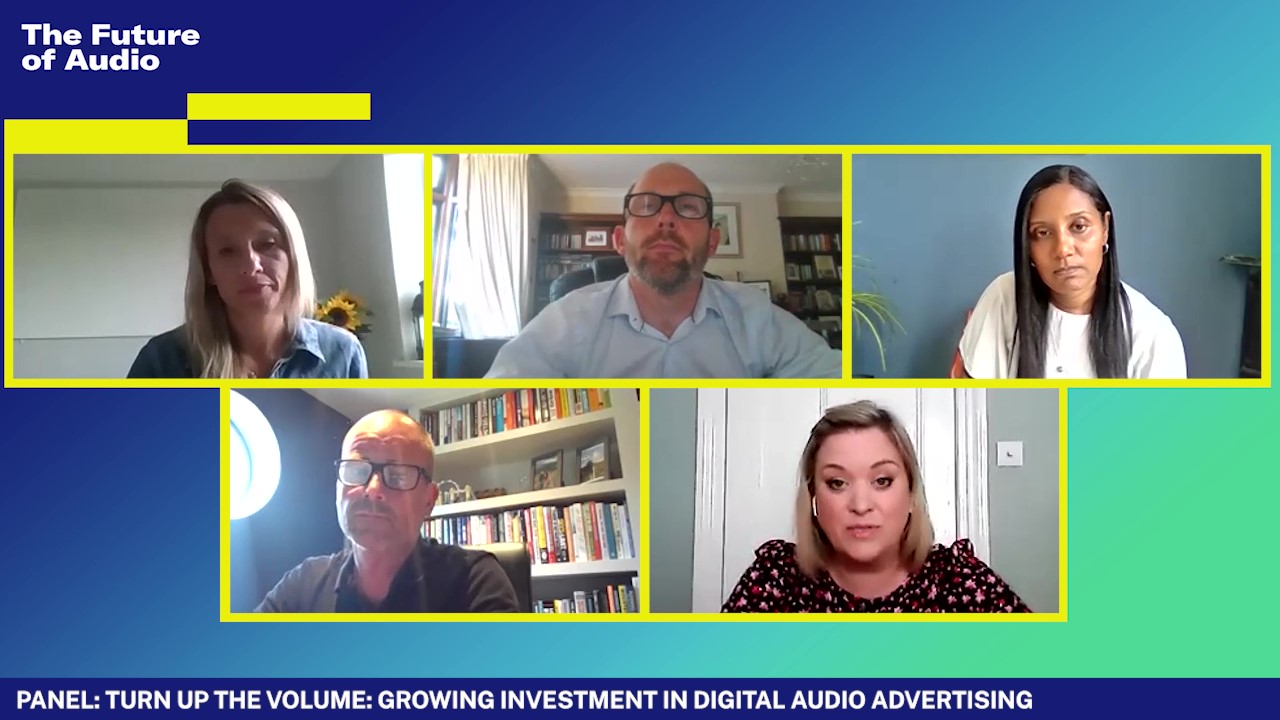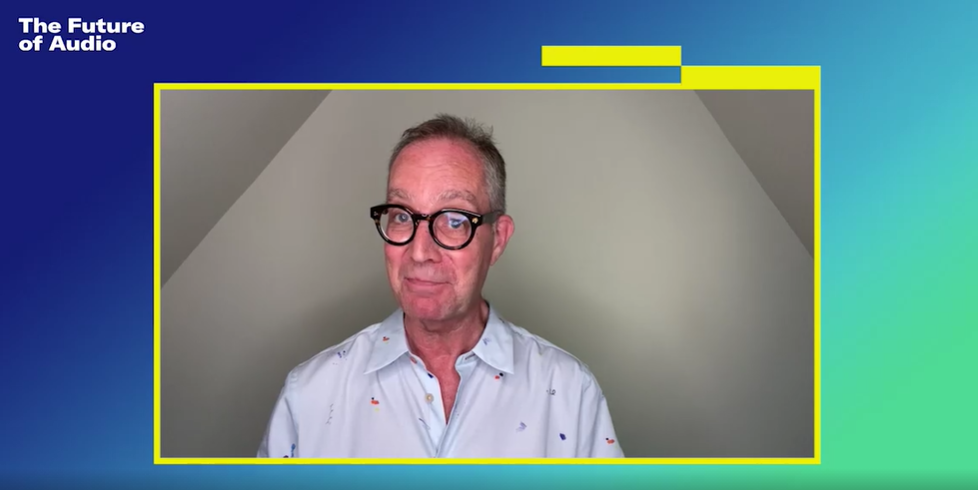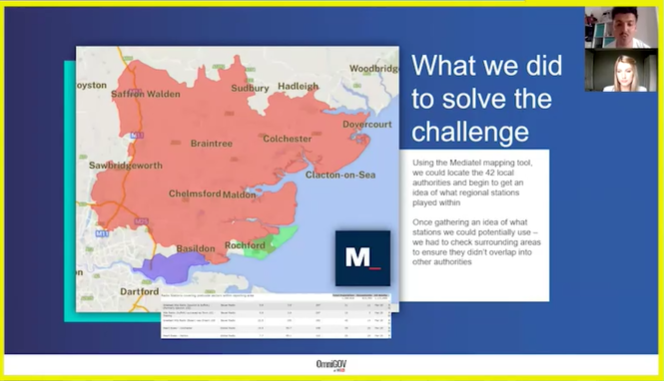Is dynamic creative on digital radio worth the extra cost?

With all the opportunities now available for advertisers to personalise and tailor content on radio, should advertisers be prepared to see the medium differently?
“This should be about making life easier and better [for advertisers], not making things more difficult,” said Wendy Moores, head of marketing for Direct Line at The Future of Audio.
Radio has traditionally been seen as a cheap and cheerful media channel for advertisers. But now that it’s possible to create potentially thousands of different creative messages for a single campaign, is it worth the extra cost and complexity?
While Moores said it was a “no brainer” for brands to consider using multiple creative executions of copy in campaigns, she added that additional cost to audio production could leave brands with a trade off to make about where ad spend is best allocated in their media mix.
Speaking during the virtual audio advertising conference, Moores said that brands stand to benefit from more personalised copy, by establishing “deeper relationships” with consumers and connecting with “more niche audiences to complement mass reach campaigns.”
However, brands have to balance multiple factors when considering whether to run multiple creative executions on digital audio channels, and producing multiple copies for a single campaign may “present a conundrum” when it comes to budgeting for production.
As part of a panel reviewing the growth in digital audio ad spend over the last year, Moores explained that the benefit to radio production is that it has traditionally been much cheaper than other broadcast channels.
If producing multiple creative copies per campaign would increase production cost, then brands would need to “redress the balance of investment” into digital audio, Moores said.
 Panel (clockwise from top-left): Lee Lythe, chief investment officer, Spark Foundry; Charlie Brookes, chief revenue officer, Digital Audio UK, Bauer Media Group; Chontal Angus, head of product development – Audio, Mediatel; Moores; Robin O’Neill, managing director – investment, Group M.
Panel (clockwise from top-left): Lee Lythe, chief investment officer, Spark Foundry; Charlie Brookes, chief revenue officer, Digital Audio UK, Bauer Media Group; Chontal Angus, head of product development – Audio, Mediatel; Moores; Robin O’Neill, managing director – investment, Group M.
Speaking in a separate presentation, Matt Hopper, co-founder at Trisonic, challenged the notion that producing multiple creative executions on audio would add cost to audio production budgets.
“The belief that it may cost a lot is one reason why so many advertisers use the same copy [across broadcast radio and digital audio channels]. But adapting your copy need not cost very much at all,” Hopper said.
Clarifying to Mediatel News this week, the audio production expert explained: “One of the biggest costs in putting together audio ads is voice usage. This is paid to the voice artist(s) and the amount is dependent on the radio station(s) or digital audio platform(s) you use and, in the case of digital audio, the number of impressions the campaign will achieve.”
“Generally, you pay that usage whether you’re using one execution across all territories, or different executions to different territories. To localise the ads, the only thing that you would need to factor in is additional studio costs and production fees to mix and master the variations. So actually the differential is less than you’d imagine.”
But why complicate things?
During the panel, Moores also described how complexity is another concern for advertisers when considering multiple creative executions in audio campaigns.
Complexity can arise from approval processes taking longer in highly regulated environments like insurance, Moores explained, because “replacing small bits of copy” may “cause some problems when it comes to getting approvals.”
Moores argued: “This should be about making advertising better, not making things more difficult for ourselves. There is quite a lot to balance, but on the whole, for me, it feels like a no-brainer to start thinking about how we can have much better copy, much better messaging, and target those audiences in a better way.”
Improving creative execution of campaigns was a key talking point at The Future of Audio last week.
Using Audiotrack data, Jason Brownlee, founder at Colourtext, questioned whether brands are refreshing their audio creative often enough.
The data analyst, who designed Radiogauge for Radiocentre, shared that on average, brands tend to use audio creative for sixty days at a time, and around 18% of brands use the same piece of ad copy for six months or more.
Hopper also described how despite “exponential growth” in digital audio over the last three years, advertisers are increasingly using the same copy on both linear radio and digital audio.
“Why do we need to adapt to digital audio? The way I see it, it’s all about soundstage,” Hopper explained.
Soundstage depicts the spatial sound image made available to a listener, which determines how you hear the location of instruments when listening to a given recording.
For example, if someone listens to Pink Floyd’s Dark Side of the Moon through their best headphones – they would hear instruments, vocals and sounds appear in different locations, with varying effect.
Hopper pointed to the fact that actors need to project their voice and accentuate their actions for the stage. However, in film, where actions need to be more subtle, actors need to moderate their voices because, through the screen, the audience seems much closer to the actor.
Hopper (pictured, above) continued: “Linear radio is still consumed largely through speakers, in often pretty busy environments, and that’s why media owners process their radio output for maximum punch, they use a lot of audio compression to make the quiet bits louder, so everything gets heard. And when we mix a radio ad, we have to make sure it stands out too.”
“But digital audio is consumed very differently. 85% of podcasts are consumed not through speakers – but through headphones. It’s a more intimate listening experience.”
Hopper concluded: “The added reward for making the extra investment will pay for it many times over, because the listener is more engaged.”
Dynamic creative isn’t just for digital
During a later session at the conference, Flora Williams, head of implementational planning at Manning Gottlieb OMD and her colleague William Barlow, investment account manager (both pictured, below), described how they used multiple creative executions successfully on broadcast radio channels.
As part of the UK Government’s Covid-19 communications strategy, the duo described how multiple creative executions played a crucial role in OmniGov’s unique media planning and buying challenge during the height of the pandemic.
Until the tiered system introduced by the Government, the majority of the Covid-19 messages were split by national location. However, the nature of the tiering system meant that 42 personalised broadcast copies were required for the different regions of the UK.
The broadcast copies had called out both the region and its associated tier, meaning the team not only had to consider how to plan regional stations that the specific copy aligned with, but also ensure no stations overlapped sub regions or tiers.
“We hadn’t run a campaign as granular as this before. It was a completely new challenge along with the creative agency,” explained Barlow.
There was no room for mistakes when it came to planning, because you could have zero overlap in the regions, otherwise you’d confuse the public during a vital period of Covid-19”.
“When it comes to delivering localised messages on a UK-wide scale, broadcast radio is not a channel you’d usually relate with. But this campaign showed it can be very effective if implemented correctly,” said Barlow.
“Ultimately not only the campaign was successful in fulfilling the media KPIs being reach and awareness, but it was also confirmed that the tiering campaign saved lives.”
The agency used location mapping using tools such as Mediatel Connected to achieve the result. The copy instructions were handled by J-ET’s Copy+ feature and the ads themselves delivered by Audiotrack.
You can watch all of the on-demand videos from The Future of Audio here.





